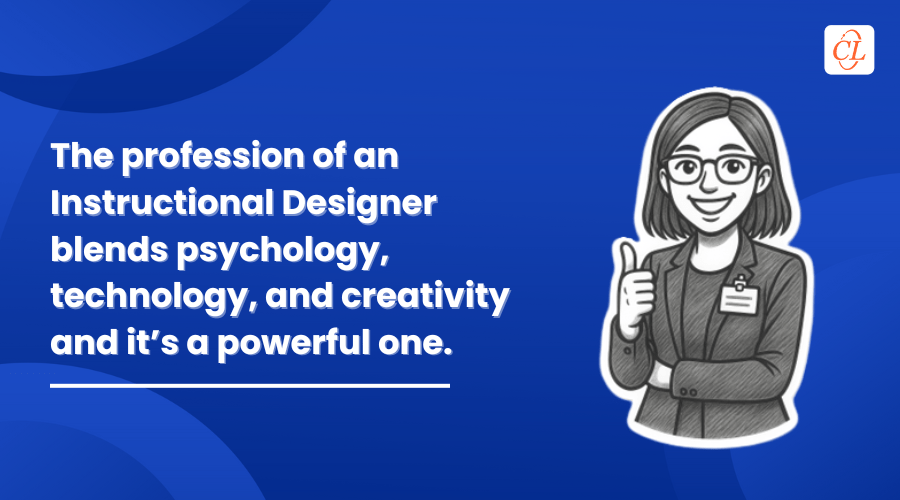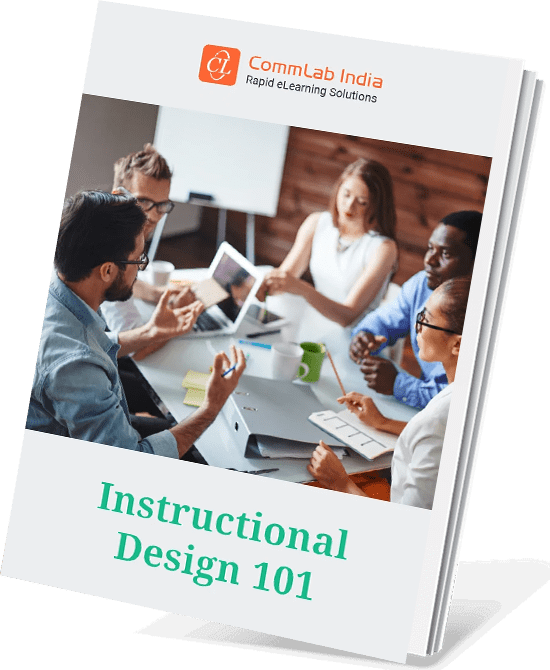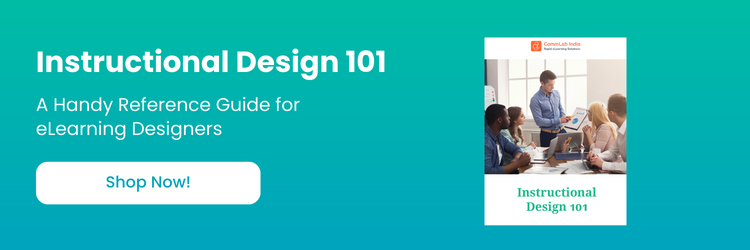Have you ever sat through a training so dull you almost fell asleep—or been so engaged in a course you didn’t want it to end? That difference is the work of an instructional designer. And here’s the good news: with the right roadmap, it’s a field you can break into—even if you have no idea where to start.
Whether you’re a teacher exploring a new path, a corporate trainer shifting to digital, or someone passionate about crafting meaningful learning experiences, this post will highlight how to start, grow, and thrive in instructional design. From understanding the must-have skills to choosing the right certificate program, you have got everything covered.
Download Now: Instructional Design 101
Let’s dive in and chart your course to a fulfilling career in learning design.
What Does an Instructional Designer Do?
Think of an instructional designer (ID) as the architect of learning. IDs create the blueprint for how people learn by designing engaging and effective learning experiences. Instructional designers are the creative minds behind everything from onboarding programs for new employees to the online courses used to learn new skills like coding.
Their role involves identifying what learners need to know and crafting learning experiences that are both effective and engaging. They rely on systematic frameworks like the ADDIE model—Analysis, Design, Development, Implementation, and Evaluation—to ensure the training is structured, purposeful, and results-driven.
Typical tasks include:
- Conducting learning needs assessments
- Collaborating with subject matter experts (SMEs)
- Designing and developing eLearning courses and materials
- Implementing instructional models like ADDIE and SAM
- Evaluating learning outcomes using feedback and data
IDs work in diverse settings—corporate L&D teams, higher education, government, and freelance roles—making this a versatile career. The impact of their work is far-reaching: instructional designers help individuals gain new skills, advance their careers, and support organizations in becoming more knowledgeable and efficient.

What Skills Are Essential for a Successful Instructional Designer?
To succeed in Learning and Development, you’ll need a unique combination of learning science, technology, communication, and creativity.
1. Learning Theories
This is your foundation. You need to understand how people learn, so you’ll dig into theories like cognitivism and constructivism. This knowledge is your secret weapon for designing truly effective instruction.
2. Instructional Models
Know how to apply models like ADDIE, SAM, and Bloom’s Taxonomy.
3. eLearning Tools
You’ll be building courses, so you need to master tools like Articulate Storyline, Adobe Captivate, or Camtasia. These are the apps that turn your ideas into interactive lessons and engaging videos.
4. Project Management
You’ll be juggling multiple projects, deadlines, and stakeholders. Good organizational and project management skills aren’t just nice to have—they’re essential.
5. Communication
You’ll be working with everyone from subject matter experts (SMEs) to C-level executives. The ability to listen, ask the right questions, and translate complex ideas is key —clear communication is key.
6. Visual Design
You don’t have to be a graphic designer, but knowing basic design principles will help you to create clean, easy-to-understand interfaces and course visuals.
According to the eLearning Guild, top-performing Instructional Designers align learning goals with business impact.
Experience vs. Certification: What Matters More?
The great debate: what’s more important—hands-on experience or a formal certificate? This is the question everyone asks! Let’s clear it up.
Experience is king. Nothing beats a portfolio full of projects that show what you can do. A great portfolio proves that you can apply all those theories and tools to real-world problems. But for many people, especially those making a career switch, certification is the perfect starting point. It gives you the structured knowledge you need, introduces you to industry-standard models, and gives you a formal credential.
Should You Build Skills or Earn Credentials First?
Experience proves you can apply skills to real-world challenges, while certification gives you structured knowledge and credibility—especially valuable for career switchers.
The best strategy? Get a certification to build your knowledge, and then immediately start working on projects to build your portfolio. A 2022 LinkedIn Learning report showed 64% of L&D professionals believe certifications improve job prospects—especially when paired with real-world.

Instructional Design 101
A Handy Reference Guide for eLearning Designers
- eLearning standards
- Streamlined instructional design process
- Effective assessments
- And More!
What Are the Steps to Becoming an Instructional Designer?
Ready to get started? Follow these steps to build your career from the ground up:
1. Get Educated
Whether it’s a formal certificate program or a series of online courses, start by learning the fundamentals of instructional design.
2. Learn the Tech
Pick one or two of the major eLearning authoring tools and become a pro. Don’t be afraid to experiment!
3. Build Your Portfolio
This is your most important asset. Create 2-3 projects that showcase your skills. It’s how you’ll prove you can do the work.
4. Network, Network, Network
Join online groups, follow IDs on LinkedIn, and connect with people in the field. Networking can open doors you never knew were there.
5. Update Your Resume
Highlight all your transferable skills. Did you manage a team? That’s project management. Did you create content? That’s development. Frame your past experience through the lens of instructional design.
What’s the Best Way to Build Hands-On Experience in Instructional Design?
Don’t have formal job experience? No problem. You just need to be creative. Try these strategies:
1. Volunteer Your Skills
Offer to create short training modules for nonprofits or community organizations.
2. Redesign Existing Materials
Take a boring manual or PowerPoint and transform it into an engaging and interactive eLearning course. This is a fantastic way to show off your skills.
3. Take Freelance Gigs
Platforms like Upwork or Fiverr have small, entry-level instructional design projects that are perfect for building your portfolio and resume.
4. Build Passion Projects
Build a short course on something you love, like baking sourdough or using a specific software. The topic doesn’t matter as much as the process you use to create it.
ATD recommends that instructional designers showcase 2–3 diverse projects in your portfolio to boost your chances.

Instructional Design 101
A Handy Reference Guide for eLearning Designers
- eLearning standards
- Streamlined instructional design process
- Effective assessments
- And More!
What Are the Types of Instructional Design Certificates?
Instructional design certificates vary in cost, depth, and credibility. Here are the main types:
1. University Programs
Offer academic grounding and credentials (e.g., Purdue, Harvard Extension). Typically, 6–12 months. They come with a solid reputation and can help you build a professional network.
2. Professional Certifications
Organizations like the Association for Talent Development (ATD), IDOL Academy, and CommLab India offer respected industry-focused certifications.
3. Online Platforms
Coursera (University of Illinois), edX, LinkedIn Learning offer flexible and budget-friendly options. They’re great for self-starters who want to learn at their own pace.
4. Bootcamps
Intense, portfolio-building programs for rapid skill-building (e.g., IDOL Courses Academy).
Choose based on your schedule, learning style, and career goals.
Is an Instructional Design Certificate Right for You?
So, should you get a certificate? Here’s a quick gut check. A certificate is likely a great choice if:
- You’re making a career change and need a clear, structured way to learn the field’s fundamentals.
- You want to signal to employers that you have a formal, validated understanding of instructional design principles.
- You learn best in a guided, structured environment with a clear curriculum.

How Do You Choose the Right Instructional Design Program?
Once you’ve decided a certificate is right for you, how do you choose? Do your homework and consider these factors:
1. Credibility
Is the program from a reputable university or a respected organization?
2. Curriculum
Does it cover the key skills you need, like learning theories and authoring tools?
3. Cost
Does it fit your budget? Be sure to factor in the cost of software if it’s not included.
4. Format
Do you need the flexibility of an online program or the structure of a live class? Self-paced vs. instructor-led; online vs. in-person?
5. Career Support
Does the program offer help with building your portfolio or finding a job or mentorship?
What Additional Qualifications or Experience Will Help You Succeed?
Once you have your core skills, what else can help you stand out? These additional qualifications can make you a deserving candidate:
1. Project Management Certification
A PMP or CAPM cert shows you can handle the big picture of a project, from start to finish.
2. Graphic Design Skills
Having a basic understanding of tools like Adobe Photoshop, Canva and design principles can make your work look polished and professional.
3. Video Production
Being able to shoot and edit video in AI tools like Camtasia is a huge plus, as video-based learning is more popular than ever.
4. Data Analytics
The ability to look at data from an LMS and figure out if your training actually worked is a powerful skill.
5. Instructional Technology or UX
Understand how platforms and user experiences impact learning.
Training Industry’s 2023 report emphasizes that tech proficiency and business acumen are highly valued.
Want to design learning that truly sticks? In this video, we’ll reveal the 5 essential practices every instructional designer must master to create impactful, learner-focused experiences.
Conclusion: You’ve Got This!
Starting your instructional design career can feel overwhelming—but you’ve got what it takes. Whether you go the certification route, build your skills independently, or do a bit of both, what matters most is consistency and curiosity.
Keep learning. Keep building. Keep networking. With growing demand and endless tools at your fingertips, this is the perfect time to jump in and start designing learning that matters.
Unlock the secrets to becoming a top-notch instructional designer with our comprehensive eBook! From mastering eLearning standards to crafting performance-based learning objectives, this guide walks you through proven strategies, tools, and techniques to design impactful learning experiences. Download your copy today and start creating training that truly works!
View the original article and our Inspiration here



